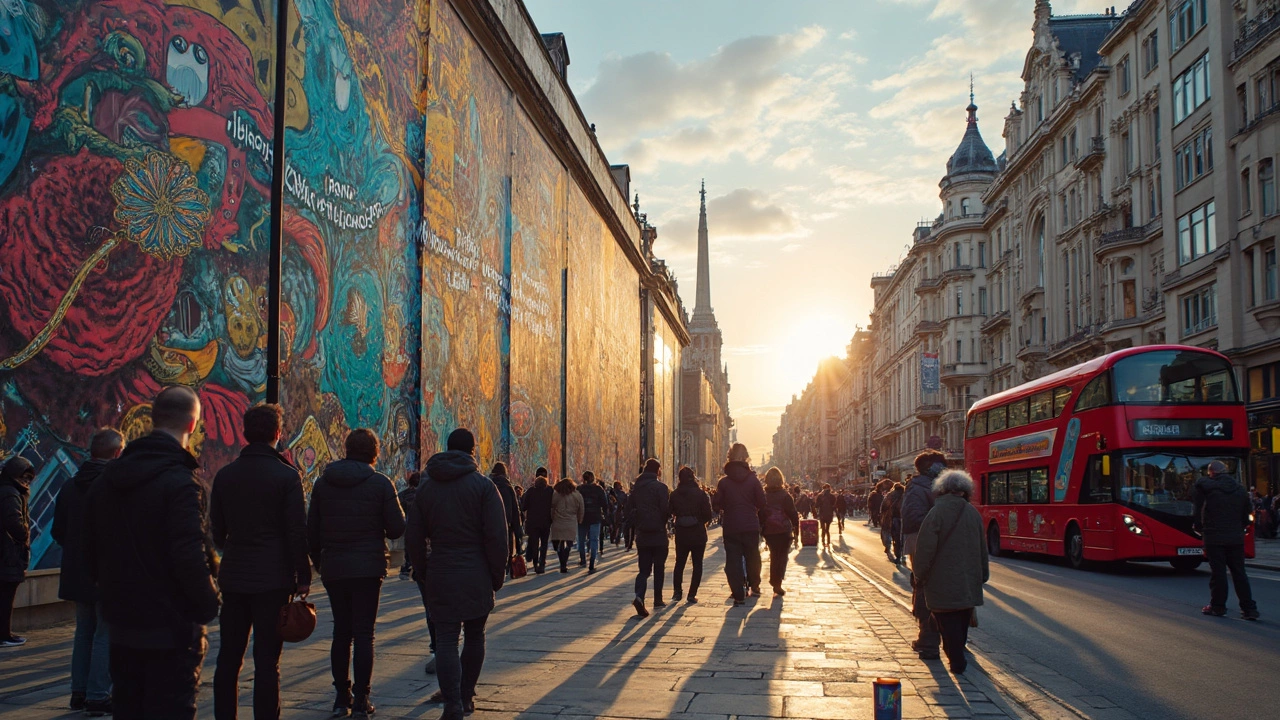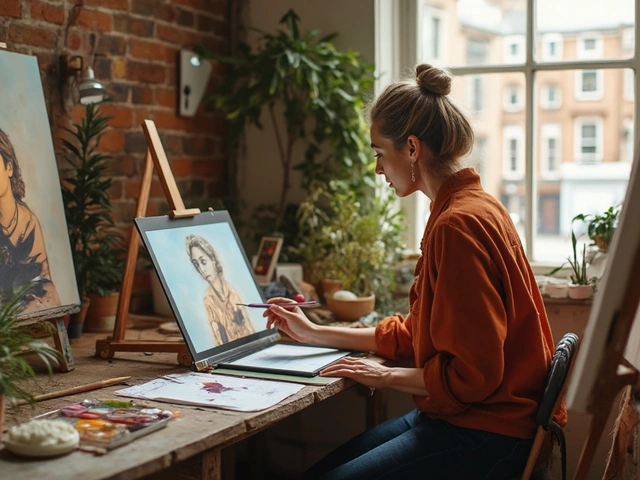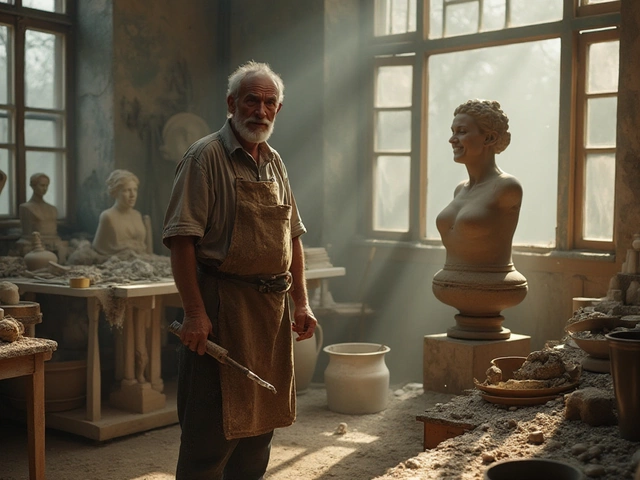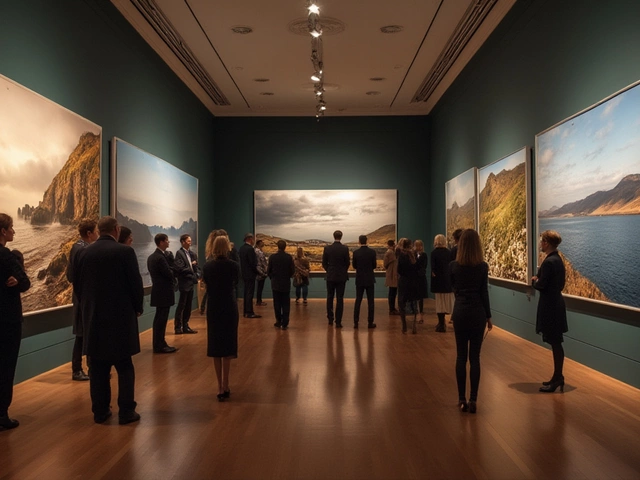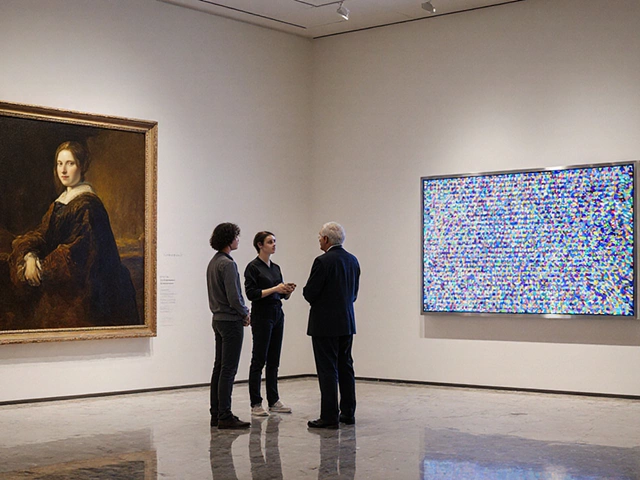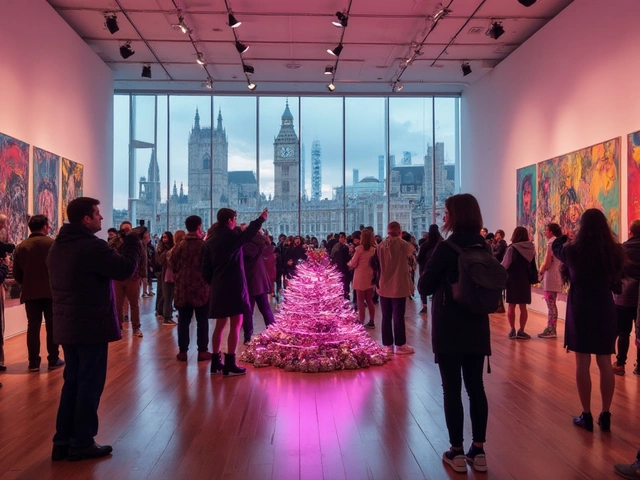You see it everywhere—on train cars, alley walls, even abandoned buildings. But street art isn’t just random acts of rebellion. It’s a whole movement, and it’s way more organized than most people think.
Street art is basically any visual art in public spaces, usually outside the rules set by museums or galleries. It covers a lot: bright painted murals, clever stencils, paste-ups, sculptures, even yarn-bombed trees. The main thing? Street art is for the public, not tucked away behind glass or with a fancy entrance fee.
Lots of cities actually invite street artists to create legal murals. Some even hold festivals for it—think Miami’s Wynwood or London’s Shoreditch. But not every spray-painted wall is legal. The lines between art and vandalism can blur fast, and that's a whole debate you’ll see online all the time.
Curious about what’s legit and what’s not? There are signs. Legal pieces are usually huge, bold, and signed. Illicit work might get cleaned off quickly or look rushed. Either way, street art always grabs your attention, makes you stop, and, most of the time, has you pulling out your phone for a quick pic.
- The Real Meaning of Street Art
- How Street Art Grew Up
- What Sets Street Art Apart
- Tips for Exploring Street Art Safely
The Real Meaning of Street Art
If you ask ten people what street art means, you’ll probably get ten different answers. At its heart, street art is all about sharing something with everybody, not just art snobs in fancy galleries. It started out as a way for people—often the ones left out of traditional art spaces—to get their voices heard on the street, where everyone could see it.
Street art isn’t just “graffiti.” Graffiti is often about tagging your name or crew; street art goes a lot further—it tells stories, pushes ideas, sparks debates. Banksy made street art famous by commenting on politics and society with simple stencils, but plenty of others do the same in their own style, using whatever medium they like.
This art pops up wherever there’s public space. Sometimes it’s made with the blessing of property owners, and sometimes not. You’ll see colorful murals in neighborhoods trying to brighten up old walls, or angry stickers taking a jab at politicians. Street art changes with every city. A mural in Paris doesn’t feel the same as a paste-up in São Paulo or a yarn-bombed bench in Melbourne.
Why do artists choose the street? It’s about access and attention. Most people walk by a mural every day—way more than go to a museum. That makes the street a powerful ‘gallery’ with zero admission fees. Plus, you don’t need to be rich or famous to try it. Anyone with a can of spray paint, an idea, and a little guts can do it.
And here’s something wild: lots of street artists don’t even want to become “real” artists in the gallery world. They’re happy putting up work outside, for free, just to get a message out. For them, street art is about connecting with people, not making money.
How Street Art Grew Up
Street art didn’t just show up out of nowhere. It has roots going all the way back to the graffiti boom of the 1970s in New York City. Back then, kids used spray paint to tag subway cars and walls, signing their nicknames in bold letters. This wasn’t just for fun—it was about getting noticed in a city that often ignored them.
By the 1980s, street art started to mean more than just writing your name. Folks like Keith Haring and Jean-Michel Basquiat painted striking images and messages that made people think. They even crossed over into the world of galleries but never totally left the streets behind. These artists proved you didn’t need permission to make something people would talk about.
The 1990s changed the game with stencils and posters, especially in places like London and Paris. Banksy popped up in the UK, using stencils to make clever art with a clear message. His works are now seen as valuable—not just rebellious scribbles. Around the same time, the Internet made it easier for street artists to share what they were doing. That helped the movement go global fast.
In the 2000s, street art went mainstream. Cities like Berlin, São Paulo, and Melbourne started to celebrate it, not paint over it. Big legal murals became popular, and street art festivals started drawing tourists. Social media turned every alley wall into a possible viral post. What began as underground is now part of city culture around the world. Street art isn’t just tolerated anymore—it's appreciated by locals, tourists, and even city councils.
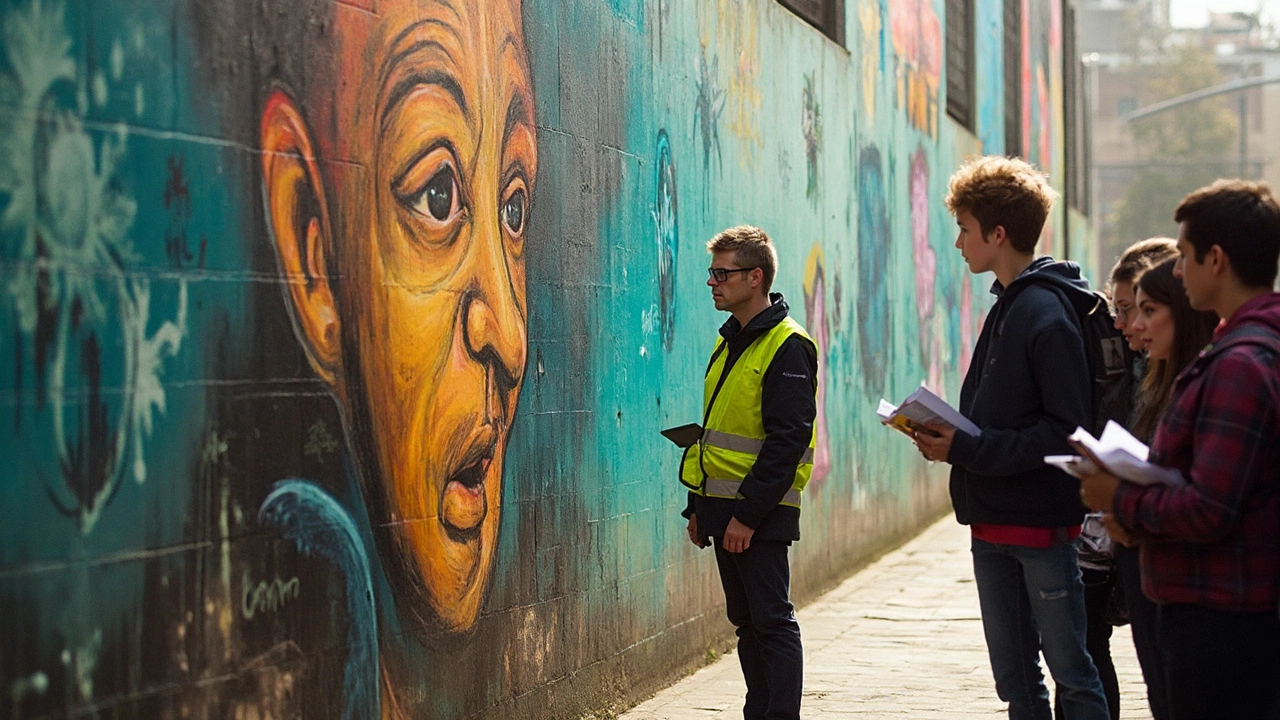
What Sets Street Art Apart
Street art isn’t just another splash of paint on a wall. What makes it stand out is how it connects with regular people, not just art buffs. You don’t need a ticket or any art knowledge; if you’re walking down the street, it’s right in your face. That’s a big deal—almost no other art form is this open to everyone. In fact, a 2023 report found that over 60% of city residents in big cities like New York and Berlin view street art on their daily commute.
Unlike old-school graffiti, which is mostly about tags and getting your name out there, street art’s more about the message or the image. Artists use everything from spray cans to ceramics. Ever seen Banksy’s rats or Shepard Fairey’s posters? Those pieces actually say something, whether it’s a joke, a political jab, or a call to action. Most artists sign their work, making it easy to spot who did what—kind of like a street-level signature.
If you compare street art to ads plastered everywhere, there’s a key difference. Ads want you to buy something; street art usually wants you to think or feel something. It’s about starting a conversation right where people can’t ignore it.
- Street art pops up fast, sometimes overnight.
- It shapes the vibe—or even reputation—of whole neighborhoods (just look at Melbourne's Hosier Lane).
- Some works are temporary, others stick around for years or even decades.
- It covers way more than just paint—think stickers, mosaics, even digital projections these days.
Here’s a quick comparison of popular formats:
| Type | Common Tools | Typical Lifespan |
|---|---|---|
| Murals | Spray paint, rollers | Years |
| Stencils | Spray paint, cut templates | Weeks to months |
| Paste-ups | Wheatpaste, paper | Days to weeks |
| Installations | Mixed materials | Varies |
So why do people pay attention to street art? Because it’s where anyone—no matter their background or budget—can add something wild and new to the city’s story. You don’t need an art degree to get it; you just need to keep your eyes open as you walk by.
Tips for Exploring Street Art Safely
If you want to check out street art up close, there’s a smart way to do it. Not every corner with spray paint is safe or worth the risk. Some famous neighborhoods for street art like LA’s Arts District or Berlin’s Kreuzberg are friendly to visitors, but others might not be as welcoming, especially late at night.
Here’s how to get the most out of your street art hunt—without trouble:
- Stick to well-known spots first. Places like Wynwood Walls in Miami or Hosier Lane in Melbourne attract locals and tourists. They’re better lit, often patrolled, and you’re less likely to get weird looks for snapping pics.
- Go during daylight. Murals pop in the right light anyway, and you’ll stay safer. Most reports about risky run-ins happen after dark or in isolated spots.
- Keep your head up and phone ready, but avoid getting so distracted you forget where you are. Traffic, bikes, and the occasional skateboarder zip by faster than you’d think.
- Want a deeper dive? Look up local street art tours. Cities from London to Buenos Aires have guides who’ll walk you around hidden gems, share the artists’ stories, and point out what’s legal or not. Some tours are free; some cost a few bucks—but the insights are usually worth it.
- Never touch or climb on installations or murals. Besides the risk of damage, some sculptures might even be sharp or unstable (trust me, I’ve heard too many dad stories in hospital waiting rooms).
- Avoid private property unless you’ve got clear permission. Just because an alley has cool tags doesn’t mean you’re welcome to walk around someone’s backyard.
If you bring kids along, plan ahead—pick open, busy areas and have a talk about what not to touch. Some pieces get painted over with new art every few weeks, so snap a photo before it’s gone. And if an area doesn’t feel right, trust your gut and move on. There’s always more art a few blocks away.
